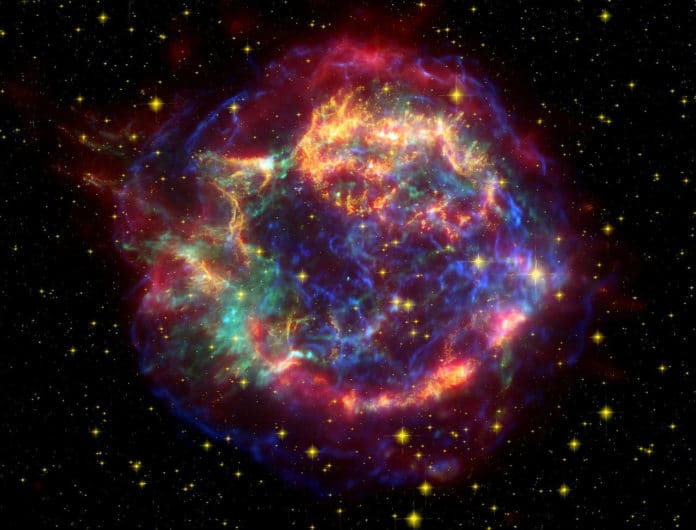A new study has shed another light on the evolution of supernovae—a fervently challenged subject among astrophysicists. Scientists reported about their discovery of optical emission from the shocked ejecta of thermonuclear supernova remnants.
UNSW Canberra scientist Ivo Seitenzahl, lead the author of the study explained, “A supernova is essentially an exploding star. Not all stars will explode as a supernova to end their lives, as many low mass stars will turn into white dwarf stars and cool and fade away without an explosion.”
The study concerns thermonuclear or “Type Ia” supernovae. Such kind of supernova explosion flings the elements that are produced in the explosion back into the galaxy. These elements mix with the gas present in the universe.
From those gas, the formation of new stars along with their planetary systems takes place. What’s more, this type of supernova formed most of the manganese, iron, and nickel on Earth millions of years ago.
The study, also, reveals optical emission from the supernova’s ejected elements (atoms) and a careful analysis of the light emitted allows for a first direct determination of the shock velocity.
Dr. Seitenzahl said, “Previously, people had seen optical emission from the shocked gas of the interstellar medium. Now we see emission from the iron-rich ejecta that was freshly synthesized in the explosion.”
The kind of stars that explode as a Type Ia supernova and their evolution before the explosion is fiercely debated in the world of astrophysics.
Dr. Seitenzahl said, “the team’s discovery provides a new physical emission mechanism for the study of these exploding stars.”
“I believe our result is one of the most important discoveries in supernova and supernova remnant research in the past decade.”
The study is published in the journal Physical Review Letters.
